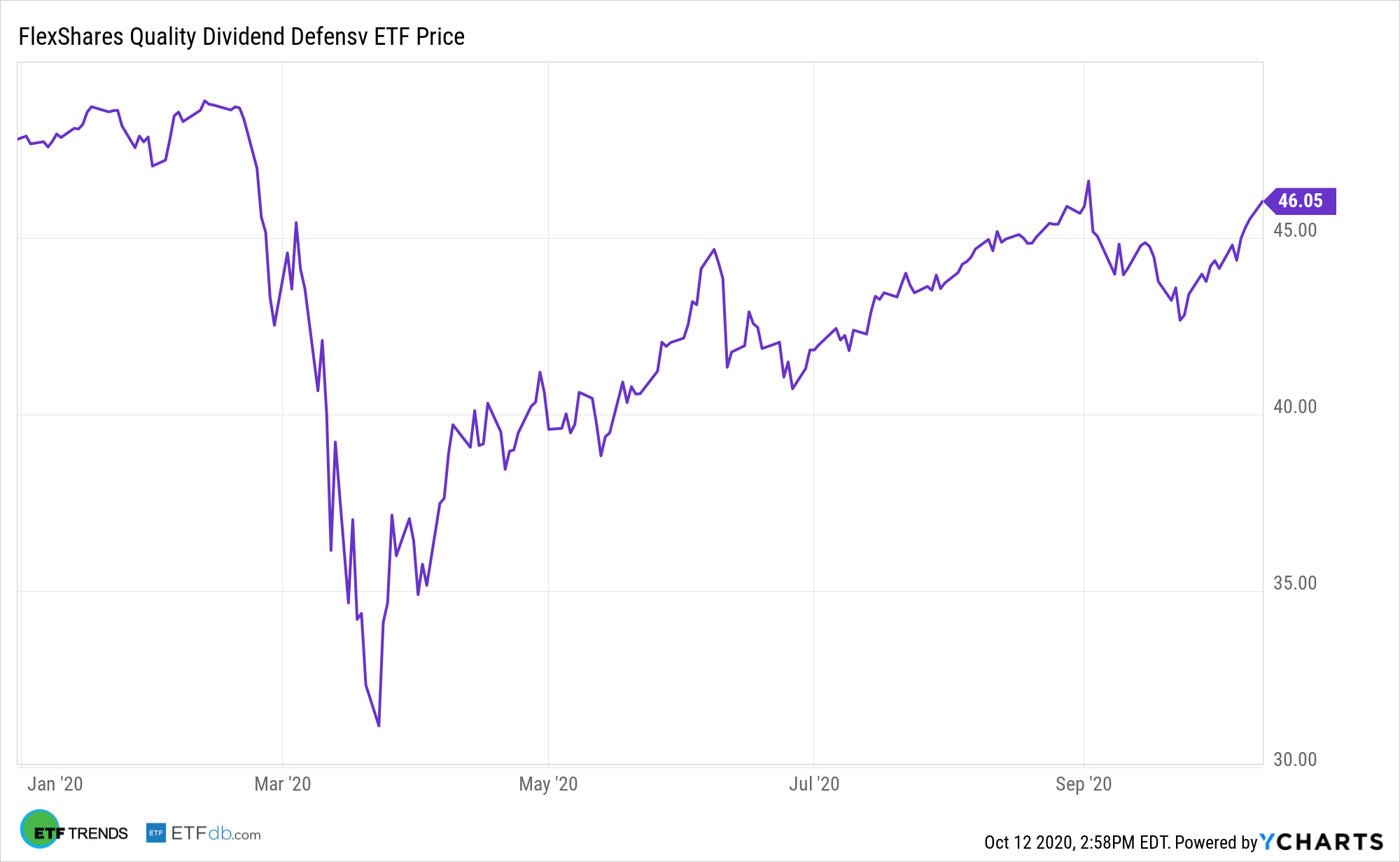Data suggest dividend increases perked up in the third quarter following a brutal stretch in the first half. of the year. Investors can play the payout recovery theme while dialing back risk with the FlexShares Quality Dividend Defensive Index Fund (NYSEArca: QDEF).
FlexShares’ quality dividend indexing methodology targets management efficiency or quantitative evaluation of a firm’s deployment of capital and its financing decisions. By using a management efficiency screen, the index can screen out firms that aggressively pursue capital expenditures and additional financing, which typically lose flexibility in both advantageous and challenging partitions of the market cycle.
“Dividends can be dependable — many companies increase theirs year after year — but the prices of the stocks to which they’re linked won’t necessarily be so steady. A fund or E.T.F. of dividend payers provides no guarantee against losses,” reports Tim Gray for the New York Times.
QDEF Relevance on the Rise
The coronavirus pandemic highlights the relevancy of QDEF’s strategy in the current market environment.
“What’s more, the pandemic has increased the risks that dividends will be cut as some companies’ earnings and cash flow diminish,” according to the Times.

Durability is the name of the game when it comes to dividend investing and that concept has rarely been more important than it is this year as investors are enduring a spate of negative dividend action.
QDEF’s underlying index is designed to reflect the performance of a selection of companies that, in aggregate, possess greater financial strength and stability characteristics relative to the Northern Trust 1250 Index, a float-adjusted market-capitalization weighted index of U.S. domiciled large- and mid-capitalization companies. The fund will invest at least 80% of its total assets (exclusive of collateral held from securities lending) in the securities of the underlying index
The features of dividend-yielding equities are obvious with regard to the sustained income aspect, but more importantly, given the current market environment, they also possess risk management features that could mute the effects of volatility.
“Dividends can help plump a portfolio’s return. Long term, they’ve accounted for about 40 percent of the total return of the stocks in the S&P 500, said Mike Barclay, a co-manager of the Columbia Dividend Income Fund,” reports the Times.
Looking at the Russell 1000 benchmark, dividends have contributed to 2.76% of the index’s total return since its inception. While investors can still augment their portfolio through dividends, it is also important to be selective in a bid to focus on areas of strength.
For more on multi-asset strategies, please visit our Multi-Asset Channel.
The opinions and forecasts expressed herein are solely those of Tom Lydon, and may not actually come to pass. Information on this site should not be used or construed as an offer to sell, a solicitation of an offer to buy, or a recommendation for any product.

